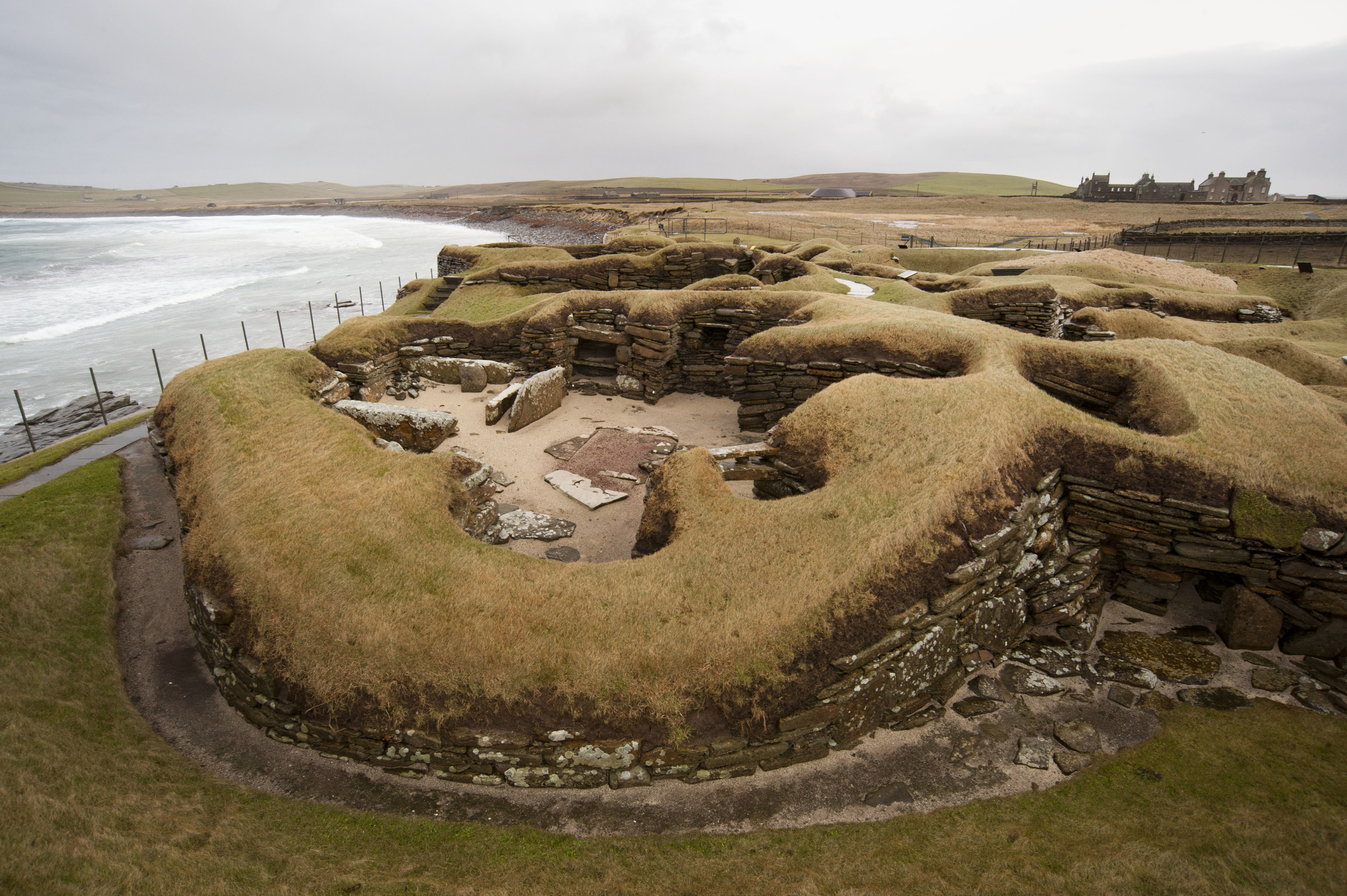
SOME of the world’s most famous heritage from the Statue of Liberty and Venice to the Galapagos Islands are threatened by climate change, a report has warned.
Historic and natural World Heritage sites are already feeling the brunt of increasing temperatures, with rising seas, erosion and storms hitting Orkney’s neolithic coastal treasures and important tropical coral reefs “bleached” by warmer seas.
Other sites, such as the world famous Stonehenge and Avebury, Wiltshire, are set to see the effects of global warming in changes to wildlife and its impacts on the landscape and the risk of more intense rainfall and flash flooding.
There is an “urgent and clear” need to limit temperature rises to protect key heritage, the study by the Union of Concerned Scientists (UCS), UN heritage body Unesco and the United Nations Environment Programme (UNEP) said.
It looked at 31 natural and cultural World Heritage sites in 29 countries that are vulnerable to increasing temperatures, melting glaciers, rising seas, more intense weather, worsening droughts and longer wildfire seasons.
[graphiq id=”5vembjNiUmh” title=”World Heritage Site” width=”500″ height=”523″ url=”
https://w.graphiq.com/w/5vembjNiUmh
” link=”
https://www.graphiq.com
” link_text=”Visualization by Graphiq” ]
Climate change will – or is already – exacerbating problems faced by some of the world’s most famous and popular heritage sites, such as the Galapagos Islands, which helped Charles Darwin form his theory of evolution, the study found.
Threats to the unique wildlife caused by 205,000 visitors a year, invasive species and illegal fishing are now being joined by rising seas, warming and more acidic oceans and extreme weather.
In the UK, at Stonehenge, warmer winters are likely to boost populations of burrowing animals that could disturb archaeological deposits and destabilise stonework.
Hotter drier summers could increase visitor numbers and change the plant species which stabilise the chalk downlands, causing more soil erosion, while Stonehenge, Avebury and Silbury Hill face increased rainfall and flash floods.
More severe problems threaten the Heart of Neolithic Orkney World Heritage site, where many archaeological sites are on the coast due to the importance of the sea in Stone Age life, and at least half are under threat from coastal erosion
Five-thousand-year-old Skara Brae, the best-preserved Stone Age dwelling complex in Western Europe with houses and stone furniture, is the most high profile site at risk of eventual loss of coastal erosion, the study said.
Lead author of the report and deputy director of the climate and energy programme at UCS, Adam Markham, said: “Orkney and the whole of Scotland is the poster child for eroding archaeology sites.
“There are thousands of them and many of them are being lost to coastal erosion and storms.
“If sea level rise and storms get worse because of global warming then we are going to be losing huge amounts of British heritage directly into the sea,” he warned.
Other sites around the world that are at risk from coastal erosion include Easter Island, with its famous head statues, many of which are situated close to the sea, he said.
Elsewhere sites which bring in important tourism revenue could be particularly badly hit, such as Uganda’s Bwindi Impenetrable National Park where rising temperatures could affect the habitat of endangered mountain gorillas.
Mr Markham said: “The report is representative of the kind of threats these iconic places are experiencing, some are in direct and immediate danger.
“At every one of these sites we can see the impacts of climate change already. Not in every place is it threatening it yet but it will threaten it in the future.”
New York’s Statue of Liberty was badly hit by Hurricane Sandy, with £68 million given for repairs and protection to the area, while more intense hurricanes are expected with climate change and sea level rises likely to cause more significant storm surges.
And Venice, with its extraordinary Byzantine, gothic, renaissance and baroque architecture, is under immediate threat from rising sea levels and work to protect it from flooding has cost £4 billion, the report said.
Mechtild Rossler, director of Unesco’s World Heritage Centre, said: “Globally, we need to better understand, monitor and address climate change threats to World Heritage sites.
“As the report’s findings underscore, achieving the Paris Agreement’s goal of limiting global temperature rise to a level well below 2C is vitally important to protecting our world heritage for current and future generations.”
READ MORE
The incredible places you need to visit before they change forever

Enjoy the convenience of having The Sunday Post delivered as a digital ePaper straight to your smartphone, tablet or computer.
Subscribe for only £5.49 a month and enjoy all the benefits of the printed paper as a digital replica.
Subscribe